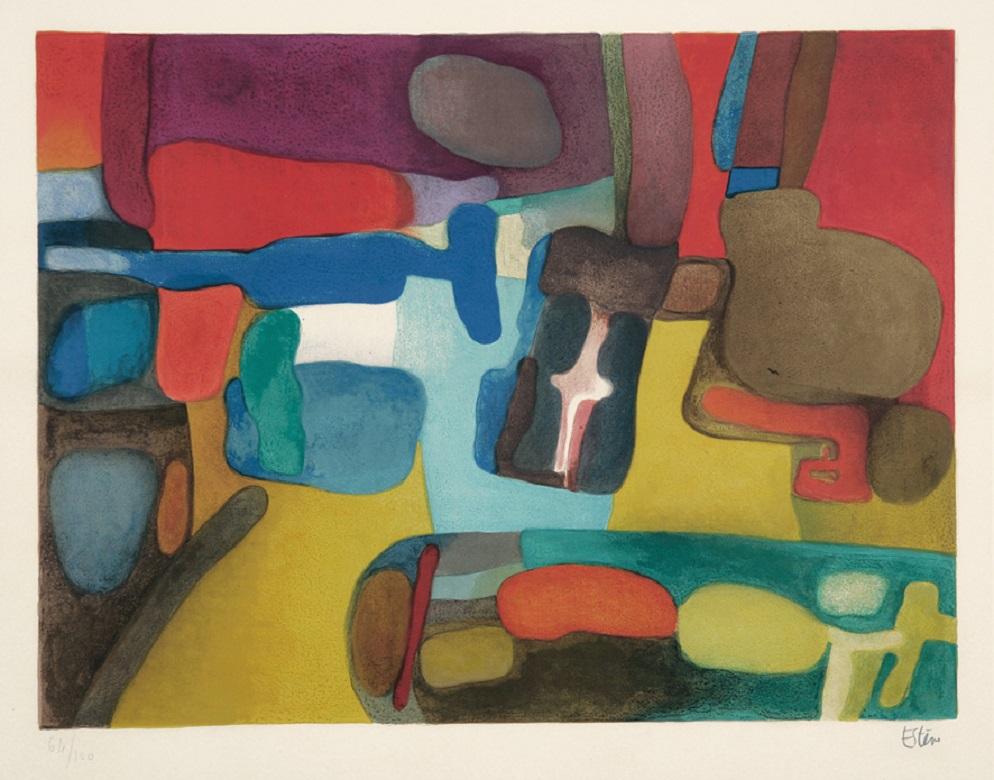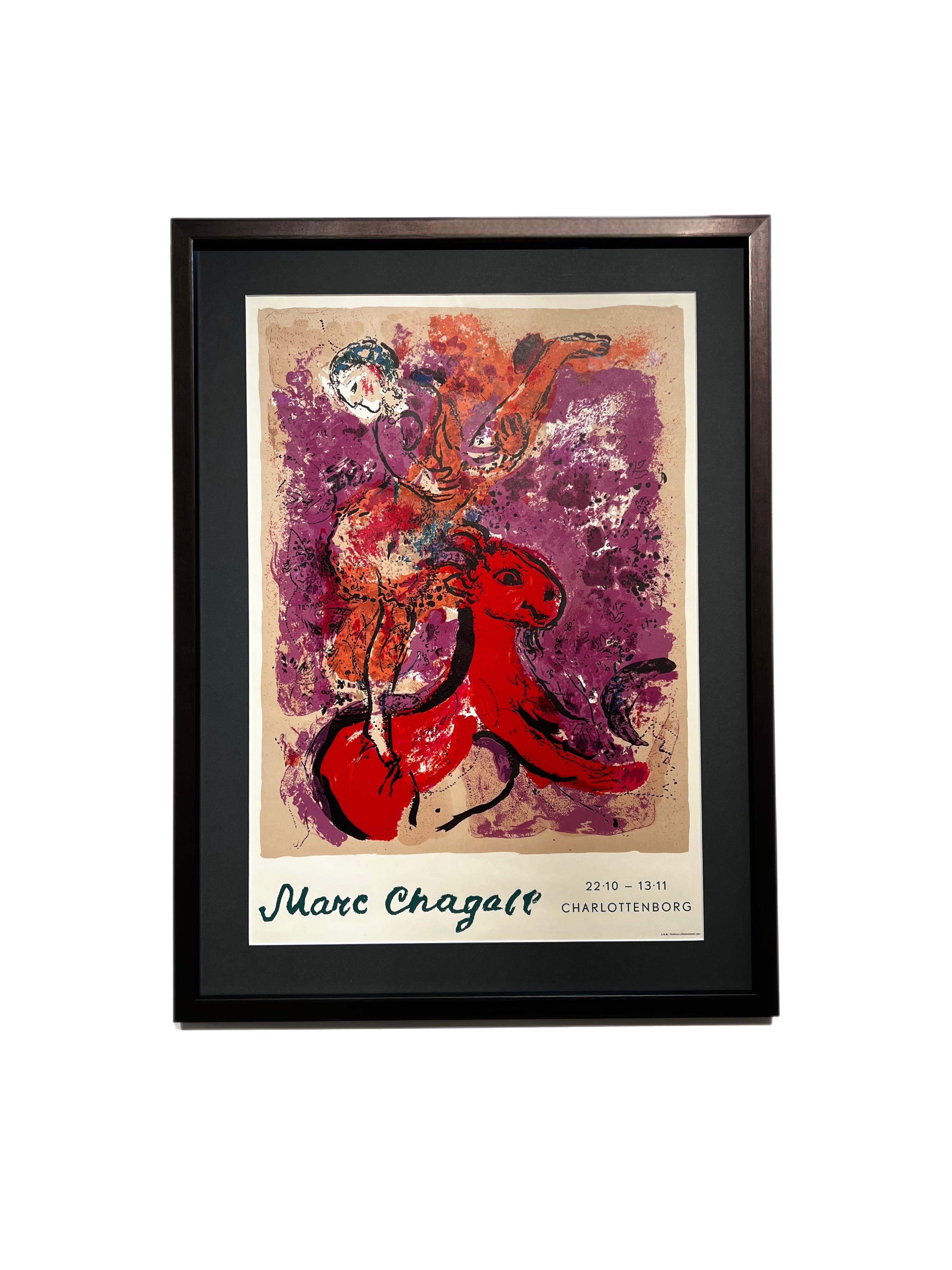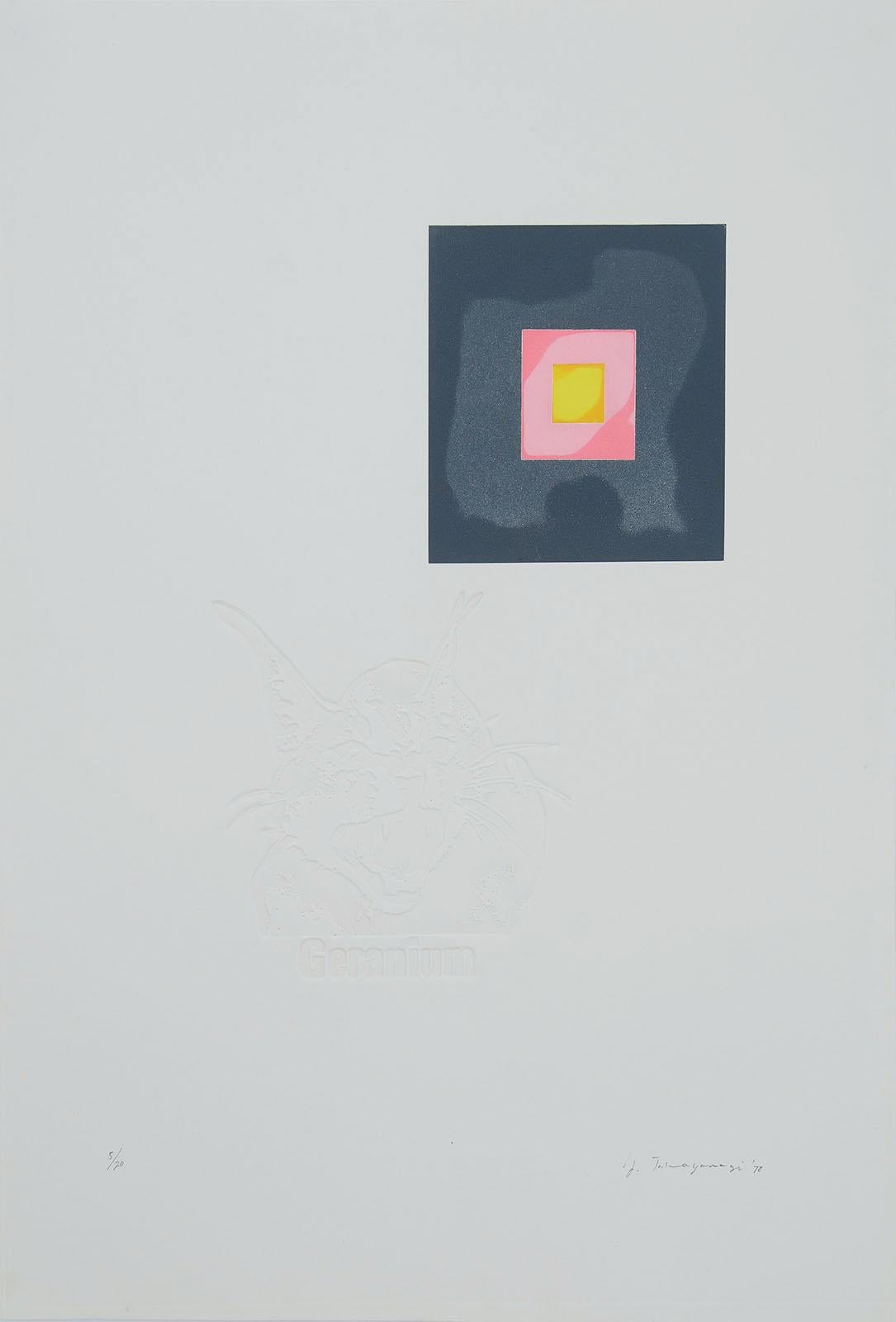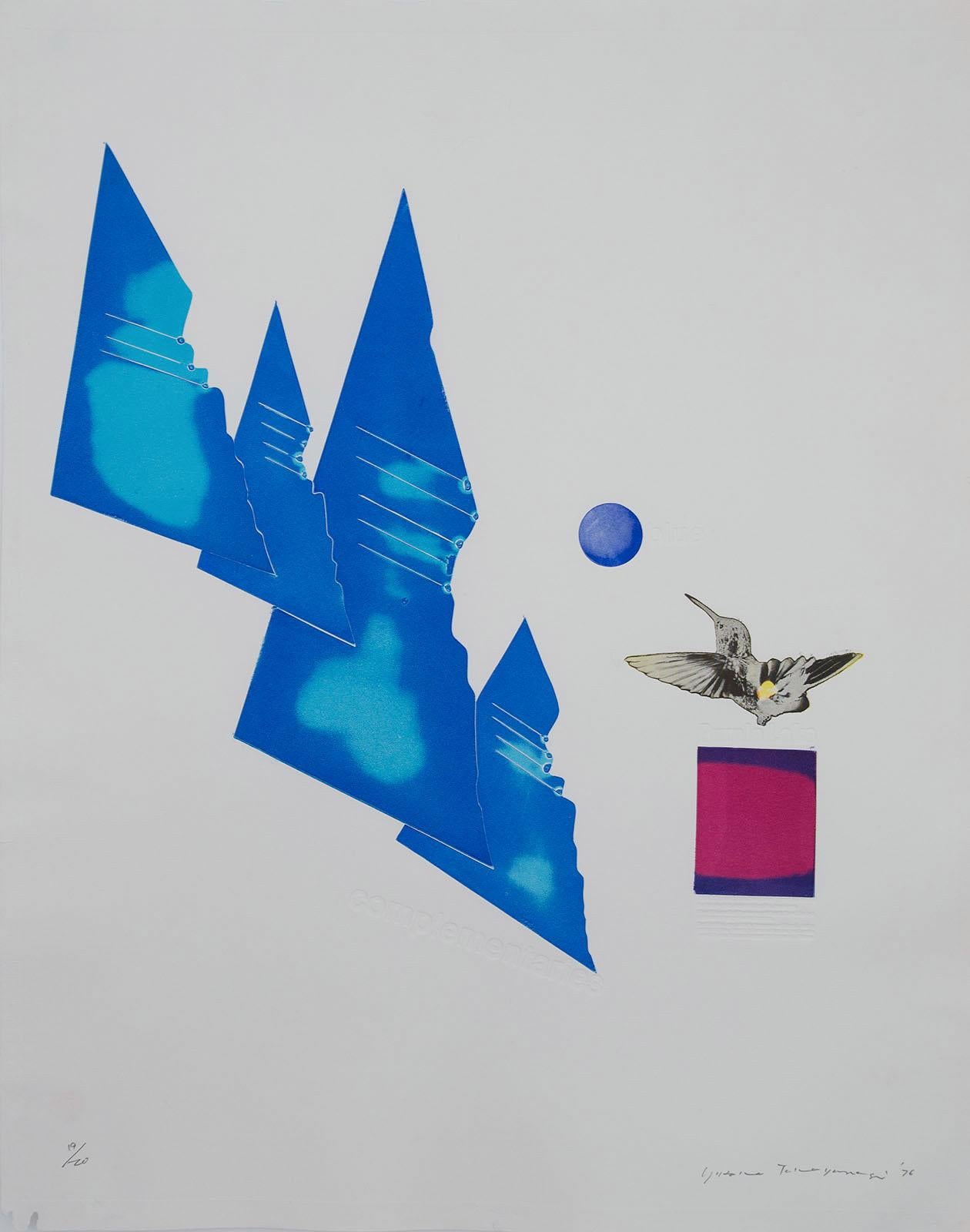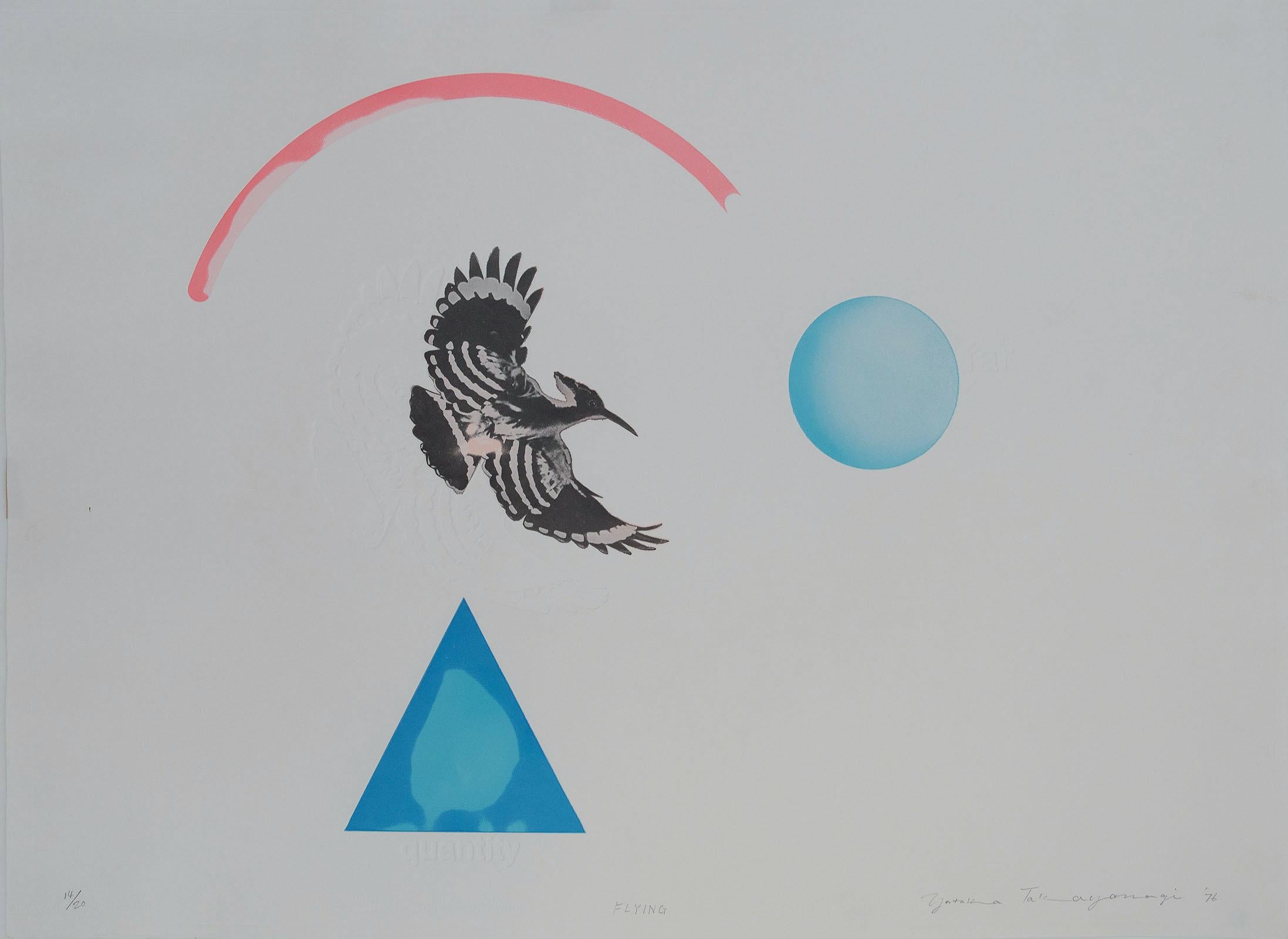Sam FrancisFramed1967
1967
About the Item
- Creator:Sam Francis (1923–1994, American)
- Creation Year:1967
- Dimensions:Height: 17 in (43.18 cm)Width: 22 in (55.88 cm)
- Medium:
- Movement & Style:
- Period:
- Condition:
- Gallery Location:Missouri, MO
- Reference Number:1stDibs: LU747313827462
Sam Francis
Sam Francis was an American artist known for his exuberantly colorful, large-scale abstract paintings. His practice incorporated elements from Abstract Expressionism, Color Field painting, Impressionism and Eastern philosophy to create a unique style of painterly abstraction.
Influenced by Jackson Pollock and Clyfford Still, Francis is more closely associated to the work of Helen Frankenthaler, as he was more interested in the formal arrangement of the picture plane than the expressivity of the individual artist. “Painting is about the beauty of space and the power of containment,” Francis once reflected.
Born on June 25, 1923 in San Mateo, California, Francis briefly served in the US Air Force during World War II but was injured during a test flight. Returning to California, he received his BA and MA from UC Berkeley in botany and psychology before beginning to pursue a career in art. The artist traveled widely during his career, and he was closely aligned with the Art Informel movement while living abroad in Paris during the 1950s.
Francis died on November 4, 1994 in Santa Monica, California, at the age of 71. He was a founding trustee of Los Angeles’s Museum of Contemporary Art, and his paintings can be found in the collections of the Metropolitan Museum of Art, the Kunstmuseum Basel, and the Centre Georges Pompidou in Paris, among others.
Find authentic Sam Francis art today on 1stDibs.
- ShippingRetrieving quote...Ships From: Missouri, MO
- Return PolicyA return for this item may be initiated within 2 days of delivery.
- Abstract (Edition 24/75)By Bram Van VeldeLocated in Missouri, MOAbstract (Edition 24/75) By Bram van Velde (1895-1981) Signed and Numbered Bottom Center Without Frame: 37" x 24" With Frame: 37.75" x 24.75" Bram (Abraham Gerardus) van Velde was a Dutch painter known for an intensely colored and geometric semi-representational painting style related to Tachisme*, and Lyrical Abstraction*. He is often seen as member of the School of Paris* but his work resides somewhere between expressionism* and surrealism*, and evolved in the 1960s into an expressive abstract art. His paintings from the 1950s are similar to the contemporary work of Matisse, Picasso and the abstract expressionist Adolph Gottlieb. He was championed by a number of French-speaking writers, including Samuel Beckett and the poet André du...Category
20th Century Abstract Abstract Prints
MaterialsLithograph
- Observador de PajarosBy Rufino TamayoLocated in Missouri, MO"Observador de Pajaros" 1950 By. Rufino Tamayo (Mexican, 1899-1991) Edition 83/210 Lower Right Signed Lower Left Unframed: 15.5" x 22.5" Framed: 21.75" x 28.25" Rufino Tamayo (August 26, 1899- June 24, 1991) A native of Oaxaca in Southern Mexico, Rufino Tamayo's father was a shoemaker, and his mother a seamstress. Some accounts state that he was descended from Zapotec Indians, but he was actually 'mestizo' - of mixed indigenous/European ancestry. (Santa Barbara Museum of Art). He began painting at age 11. Orphaned at the age of 12, Tamayo moved to Mexico City, where he was raised by his maternal aunt who owned a wholesale fruit business. In 1917, he entered the San Carlos Academy of Fine Arts, but left soon after to pursue independent study. Four years later, Tamayo was appointed the head designer of the department of ethnographic drawings at the National Museum of Archaeology in Mexico City. There he was surrounded by pre-Colombian objects, an aesthetic inspiration that would play a pivotal role in his life. In his own work, Tamayo integrated the forms and tones of pre-Columbian ceramics into his early still lives and portraits of Mexican men and women. In the early 1920s he also taught art classes in Mexico City's public schools. Despite his involvement in Mexican history, he did not subscribe to the idea of art as nationalistic propaganda. Modern Mexican art at that time was dominated by 'The Three Great Ones' : Diego Rivera, Jose Clemente Orozco, and David Alfaro Siqueros, but Tamayo began to be noted as someone 'new' and different' for his blending of the aesthetics of post Revolutionary Mexico with the vanguard artists of Europe and the United States. After the Mexican Revolution, he focused on creating his own identity in his work, expressing what he thought was the traditional Mexico, and refusing to follow the political trends of his contemporary artists. This caused some to see him as a 'traitor' to the political cause, and he felt it difficult to freely express himself in his art. As a result, he decided to leave Mexico in 1926 and move to New York, along with his friend, the composer Carlos Chavez. The first exhibition of Tamayo's work in the United States was held at the Weyhe Gallery, New York, in that same year. The show was successful, and Tamayo was praised for his 'authentic' status as a Mexican of 'indigenous heritage', and for his internationally appealing Modernist aesthetic. (Santa Barbara Museum of Art). Throughout the late thirties and early forties New York's Valentine Gallery gave him shows. For nine years, beginning in 1938, he taught at the Dalton School in New York. In 1929, some health problems led him to return to Mexico for treatment. While there he took a series of teaching jobs. During this period he became romantically involved with the artist Maria...Category
20th Century Abstract Abstract Prints
MaterialsLithograph
- Red and Blue SpiralsBy Alexander CalderLocated in Missouri, MORed and Blue Spirals Alexander Calder (American, 1898-1976) Signed in Pencil Lower Right Numbered 59/150 in Pencil Lower Left 26 x 37 inches 35.5 x 46 inches with frame One of Amer...Category
1970s Abstract Abstract Prints
MaterialsColor, Lithograph
- Red and Green BubblesBy Victor VasarelyLocated in Missouri, MOVictor Vasarely "Red and Green Bubbles" c. 1970 Color Serigraph Signed and Numbered Ed. 125 Framed Size: 34 x 29.5 inches Image: approx 18 x 18 inchesCategory
1970s Abstract Geometric Abstract Prints
MaterialsLithograph
- St. Louis Symphony Orchestra (Poster) -- signed limited editionBy Robert MotherwellLocated in Missouri, MOOriginal color lithograph designed by Robert Motherwell for the 94th Season, Powell Symphony Hall, St. Louis Symphony Orchestra From the limited edition of 120 + A.P.s on Arches Cove...Category
1970s Abstract Expressionist Abstract Prints
MaterialsLithograph
- Sphere and CubeBy Victor VasarelyLocated in Missouri, MOVictor Vasarely "Sphere and Cube" c. 1970 Serigraph Signed and Numbered Ed. 250 Framed Size: 42 x 31 inches Image Size: 28 x 21 inchesCategory
1970s Abstract Geometric Abstract Prints
MaterialsLithograph
- Cali - 20th Century, Maurice Estève, Abstract Print, Colourful, LithographBy Maurice EstèveLocated in Köln, DE"Cali" is a typical motif by Maurice Estève. The lithograph in colours was published in an edition of 100. 49,6 x 65 cm. Signed and numbered.Category
1960s Abstract Abstract Prints
MaterialsLithograph
- "El patito feo" by Antonio Saura, Abstract Print, Duckling, Blue, Bright ColorsBy Antonio SauraLocated in Köln, DEColor lithgraph by Antonio Saura "El patito feo", 1997 65 x 50 cm Copy 186/250 Edition of 285 Antonio Saura (Huesca, Spain 1930–1998 Cuenca) found his...Category
1990s Abstract Abstract Prints
MaterialsLithograph
- Woman Circus Rider on Red Horse - superb Chagall posterBy Marc ChagallLocated in London, GBOriginal lithographic poster printed by L.R.B Permild and Rosengreen.Category
Late 20th Century Abstract Abstract Prints
MaterialsLithograph
- GeraniumLocated in Llanbrynmair, GB’Geranium’ By Yutaka Takayanagi. Medium - Relief and lithographic print Edition - 5/20 Signed - Yes Size - 510mm x 660mm Date - 1978 Condition - Excellent. 10 out of 10. Born in Tokyo in 1941, Takayanagi's artistic journey began when he enrolled at Tokyo University of the Arts in 1960, studying under the renowned oil painter Kaoru Yamaguchi. His talent was quickly recognized when he received an Honorable Mention at the 8th Shell Arts Award Exhibition in the same year. During his time at university, Takayanagi took an intensive course in copper plate printing under Tetsuro Komai, receiving his degree from the graduate school in 1966. Fascinated by the simultaneous color print method, he started creating copperplate prints and soon gained recognition for his unique metallic reliefs, which he produced using collages of English newspapers. Takayanagi's passion for experimentation led him to create metallic emboss reliefs using his own photographs, and in the latter half of the 1980s, he moved on to silkscreen prints. He continued to push the boundaries of his art, constantly exploring new techniques and mediums. In 1978 and the following year, Takayanagi was appointed as an arts researcher for the Ministry of Culture and traveled to the United States, France, and the UK. These experiences enriched his artistic perspective and further cemented his reputation as a highly regarded artist. Takayanagi was part of the influential printmaking group Sosaku Hanga, which emerged in the early 20th century in Japan. This movement emphasized the artist's involvement in every stage of the printmaking process, from designing the image to carving and printing the blocks. Takayanagi's work often incorporates elements of nature and landscape, with an emphasis on texture and pattern. He also experimented with collage, incorporating found materials like newspaper clippings and photographs into his prints. Takayanagi's work has been exhibited extensively in Japan and internationally, including at the Museum of Modern Art in New York and the National Museum of Modern Art in Tokyo. He has also received numerous awards for his contributions to printmaking, including the Japan Print Association Award and the Purple Ribbon Medal...Category
1970s Abstract Abstract Prints
MaterialsLithograph
- ComplementariesLocated in Llanbrynmair, GB’Complementaries’ By Yutaka Takayanagi. Medium - Relief and lithographic print Edition - 19/20 Signed - Yes Size - 615mm x 780mm Date - 1976 Condition - Good. 9 out of 10. Born in Tokyo in 1941, Takayanagi's artistic journey began when he enrolled at Tokyo University of the Arts in 1960, studying under the renowned oil painter Kaoru Yamaguchi. His talent was quickly recognized when he received an Honorable Mention at the 8th Shell Arts Award Exhibition in the same year. During his time at university, Takayanagi took an intensive course in copper plate printing under Tetsuro Komai, receiving his degree from the graduate school in 1966. Fascinated by the simultaneous color print method, he started creating copperplate prints and soon gained recognition for his unique metallic reliefs, which he produced using collages of English newspapers. Takayanagi's passion for experimentation led him to create metallic emboss reliefs using his own photographs, and in the latter half of the 1980s, he moved on to silkscreen prints. He continued to push the boundaries of his art, constantly exploring new techniques and mediums. In 1978 and the following year, Takayanagi was appointed as an arts researcher for the Ministry of Culture and traveled to the United States, France, and the UK. These experiences enriched his artistic perspective and further cemented his reputation as a highly regarded artist. Takayanagi was part of the influential printmaking group Sosaku Hanga, which emerged in the early 20th century in Japan. This movement emphasized the artist's involvement in every stage of the printmaking process, from designing the image to carving and printing the blocks. Takayanagi's work often incorporates elements of nature and landscape, with an emphasis on texture and pattern. He also experimented with collage, incorporating found materials like newspaper clippings and photographs into his prints. Takayanagi's work has been exhibited extensively in Japan and internationally, including at the Museum of Modern Art in New York and the National Museum of Modern Art in Tokyo. He has also received numerous awards for his contributions to printmaking, including the Japan Print Association Award and the Purple Ribbon Medal...Category
1970s Abstract Abstract Prints
MaterialsLithograph
- FlyingLocated in Llanbrynmair, GB’Flying’ By Yutaka Takayanagi. Medium - Relief and lithographic print Edition - 14/20 Signed - Yes Size - 790mm x 570mm Date - 1976 Condition - Excellent. 10 out of 10. Born in Tokyo in 1941, Takayanagi's artistic journey began when he enrolled at Tokyo University of the Arts in 1960, studying under the renowned oil painter Kaoru Yamaguchi. His talent was quickly recognized when he received an Honorable Mention at the 8th Shell Arts Award Exhibition in the same year. During his time at university, Takayanagi took an intensive course in copper plate printing under Tetsuro Komai, receiving his degree from the graduate school in 1966. Fascinated by the simultaneous color print method, he started creating copperplate prints and soon gained recognition for his unique metallic reliefs, which he produced using collages of English newspapers. Takayanagi's passion for experimentation led him to create metallic emboss reliefs using his own photographs, and in the latter half of the 1980s, he moved on to silkscreen prints. He continued to push the boundaries of his art, constantly exploring new techniques and mediums. In 1978 and the following year, Takayanagi was appointed as an arts researcher for the Ministry of Culture and traveled to the United States, France, and the UK. These experiences enriched his artistic perspective and further cemented his reputation as a highly regarded artist. Takayanagi was part of the influential printmaking group Sosaku Hanga, which emerged in the early 20th century in Japan. This movement emphasized the artist's involvement in every stage of the printmaking process, from designing the image to carving and printing the blocks. Takayanagi's work often incorporates elements of nature and landscape, with an emphasis on texture and pattern. He also experimented with collage, incorporating found materials like newspaper clippings and photographs into his prints. Takayanagi's work has been exhibited extensively in Japan and internationally, including at the Museum of Modern Art in New York and the National Museum of Modern Art in Tokyo. He has also received numerous awards for his contributions to printmaking, including the Japan Print Association Award and the Purple Ribbon Medal...Category
1970s Abstract Abstract Prints
MaterialsLithograph
